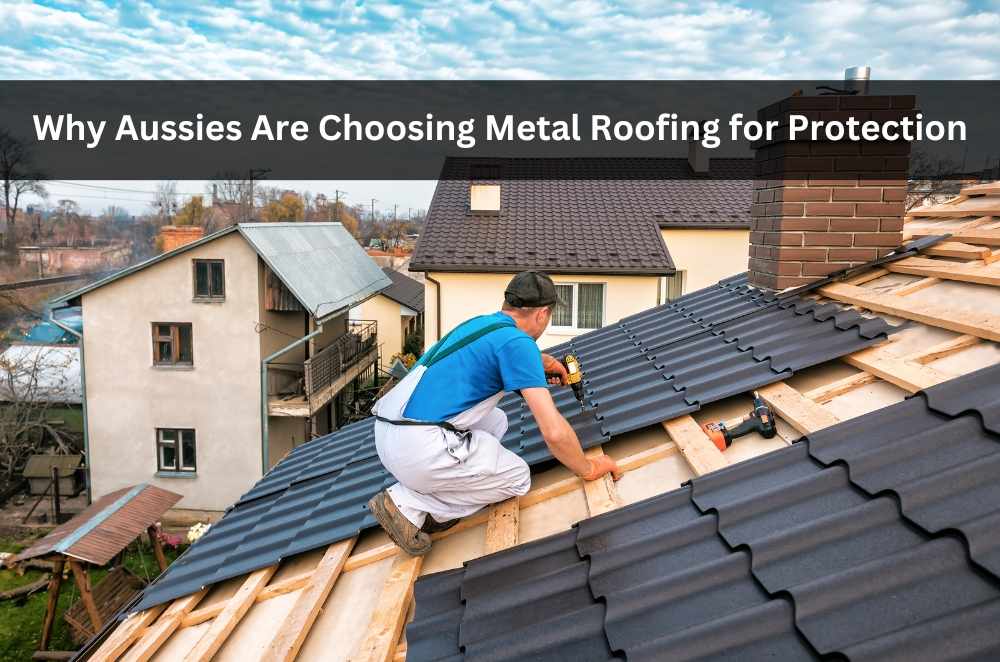
Imagine this: the relentless Aussie sun, beating down on your roof, year after year. Or those sudden, wild storms that can leave a trail of destruction in their wake. Metal roofs are tricky, but what is the upfront cost? Well, that’s enough to make anyone’s wallet wince. You’re asking yourself, is it worth it? You desire a roof that will last but don't wish to throw your hard-earned money down the drain. That’s why selecting the right metal roofing systems is crucial—they provide durability and efficiency, ensuring your investment stands the test of time. So, let's avoid the dross and get down to brass tacks.
Does a metal roof add value to a home?
Yes, mate. A metal roof is not just a roof; it's an investment. It's similar to having a premium feature in your home, like a newly remodelled kitchen or a new patio. Potential buyers see the durability and the longevity, knowing they won't have to deal with costly repairs anytime shortly. This translates to a better resale value.
How long does a metal roof last?
Now, this is where metal roofs genuinely excel. We're not just talking years here; we're talking decades.
A metal roof usually lasts between 40 and 70 years, sometimes even longer.
Asphalt shingles? If you get lucky, they may last you 15 to 30 years.
Tiles? It is better, but not entirely up to the level of a suitable metal roof.
All this longevity in itself makes it a good investment. You're future-proofing your home.

Are metal roofs energy efficient?
You bet they are. Metal roofs reflect the sun, so your home is more remarkable in summer. Imagine wearing a light-coloured T-shirt on a hot day – it makes a big difference. This means lower energy bills, which is a huge bonus, especially during those blistering NSW summers.
What are the maintenance costs for metal roofs?
Here’s another win for metal roofs: they’re low maintenance. Regular inspections and occasional cleaning are the primary roof services needed to keep them in top shape.
You’ll mainly need to do regular inspections to check for any damage.
Occasional cleaning to remove debris.
Metal roofs are far less demanding than tiles or shingles, which can crack or break.
This means you’ll save on maintenance costs over the years.

Is metal roofing noisy during rain?
This is a widespread issue, but it's essentially a myth. A well-installed metal roof, with proper insulation and a sturdy roof deck, is no louder than any other roofing material. The installation is the determining factor. A metal roof will magnify sound when installed over an open-frame building without insulation. However, the noise level is greatly diminished in residential homes where insulation, underlayment, and ceiling material are involved.
A few homeowners prefer the rain on metal roof noise. It produces a gentle, rhythmic noise, almost like rain on a tent but much softer because of contemporary installation methods. Where noise is the primary concern, extra insulation or soundproofing materials may be introduced to guarantee less noisy indoor living space.
Are metal roofs more durable than tiles?
Yes. Metal roofs are created to withstand severe weather conditions like heavy winds, hail, and fire. Compared to usual tiles that crumple whenever stressed, metal roofs do not erode, crack, or shrink. For locations where weather regularly brings hail storm surprises, the tiles easily get damaged, causing costly replacement or repair.
Unlike tile roofs, a well-maintained metal roof should last 40 to 70 years and may require repair or replacement after 20 to 30 years. Metal roofing is also lightweight, placing less load on a house's framing and making it easier to install. To put it succinctly, metal roofs are built solidly—like a good work boot—ready to take whatever the Great Outdoors dishes out.
Case study
I recently undertook a case study of a metal roof installation on a large residential estate in the Hawkesbury area. Homeowners in regions with harsh climates increasingly turned to metal roofing designed for extreme weather performance to protect their properties year-round.
They researched and compared possibilities and settled on a top-notch metal roof installed by skilled professionals. With time, the advantages became apparent—less energy expense from better insulation, few repairs despite severe storms, and no worries about rodents eating away at the building. Five years later, the roof is still as good as new, with no rust or wear signs.
The homeowner conceded that although the initial cost was more than other materials, the savings in repairs, energy consumption, and maintenance in the long run made it more than worth the expense. This experience reaffirmed that metal roof installation is a wise financial investment for longevity and durability.
Conclusion
So, is a metal roof worth the expense in the long term? Fair dinkum. Although the initial cost may be more significant, the long-term advantages are certain. You're investing in a roof that will last for decades, save you money on your energy bills, and needs little maintenance. It also increases the value of your home and offers better protection against extreme Australian weather.
Investing in the lifespan, durability, and energy efficiency is a worthwhile investment that will pay dividends. Remember that hiring the proper, dependable metal roofing contractors to get the job done right is the top priority. They'll install your roof correctly, extending its life and advantages. It's an investment in peace of mind, which is priceless in the long term.



Write a comment ...